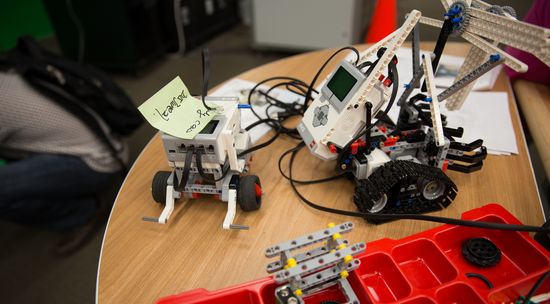Dozens of Campuses Will be Showered With Big, Multi-Year Grants for STEM
/
Funders worried about the future of science and tomorrow's workforce are stepping up their efforts to draw a more diverse set of high school and college students to STEM subjects. The main reason is simple enough: Massive demographic change is underway among young people, and if STEM education doesn't engage students of all backgrounds, that spells trouble in decades ahead. Of course, preparing diverse students to enter well-paid STEM fields is a key way to close the opportunity gap.
Race and ethnicity aren't the only issues at play, here. College students are increasingly finding their way to higher learning through nontraditional pathways. Estimates for how many undergraduates are the first in their families to attend college range from 20 to 50 percent. And nearly half of students graduating with a four-year degree have taken courses at a two-year institution. The times, they are a-changin’.
One of the funders anxious to get ahead of the curve, as we've reported in the past, is the Howard Hughes Medical Institute, which recently rolled out round two of its Inclusive Excellence competition for science education grants to colleges and universities.
As one of the wealthiest foundations in the United States, the Howard Hughes Medical Institute (HHMI) doles out big bucks for research and science education. This philanthropic powerhouse invested $666 million in biomedical research and $85 million in science education grants last year.
Over the two rounds of the Inclusive Excellence competition, HHMI will award 60 five-year grants of $1 million each, with the objective of building institutional capacity to draw students from all backgrounds into science.
That's a lot of big, multi-year grants that are up for grabs, and gives you a sense of the scale of resources that HHMI can bring to bear when it tackles a major issue.
Getting students to stick with STEM isn't easy. According to HHMI, 40 percent of college freshman arrive on campus with the intention to major in STEM fields—but before the end of their sophomore years, many of those students switch to other disciplines. One reason is that these subjects can be tough, revealing gaps between students' aspirations and their level of preparation.
The institute believes that transfer and first-generation students are especially in need of efforts aimed at engaging them in STEM studies. These new grants are intended to develop “widespread and effective science literacy” to nurture the future crop of scientists and to cultivate citizens who understand evidence-based dialogue. By focusing on the dual challenges of underprivileged student populations and the need for STEM professionals, HHMI is killing the proverbial two birds with one giant round of grants.
The 60 academic institutions chosen to participate will develop strategies to broaden access to science education and assess their progress to learn which models can be adopted by other schools. Institutions may submit proposals in one of two categories: “Building Capacity Within the Institution” for trying new strategies, or “Helping Others Build Capacity,” for institutions that have already had success in expanding inclusiveness. Not-for-profit, four-year schools that offer baccalaureate degrees in natural sciences and that are accredited and in good standing are eligible to apply by the July 12, 2016 deadline.
This latest round of grants will supplement HHMI’s extensive efforts to promote scientific education. At the K-12 level, the institute runs programs to promote learning and attract science educators. Funding at the undergraduate level offers financial support and experiential opportunities for students as well as training for faculty. Graduate and post-doctoral grants seek to help students from diverse backgrounds continue their STEM studies. HHMI also puts scientists with between five and fifteen years of experience on its payroll to finance biomedical research by creative and promising investigators.
Opportunities for support from HHMI abound, and while unsolicited grant proposals are not encouraged, organizations in the areas of science and biomedicine should bookmark the institute’s open competitions page to take advantage of future grants.
Related:








